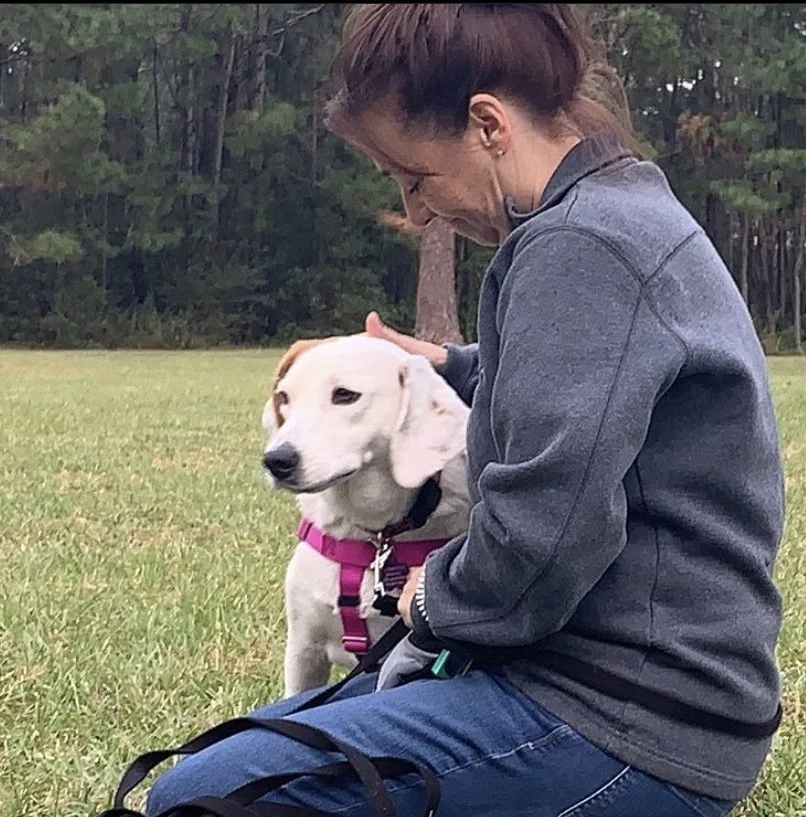Hi, I’m Maggie Marshall.
I’ve been working with dogs and coaching owners since 2009. For fourteen years, I lived and trained in Jacksonville, FL where I built a strong reputation as a behavior consultant, mentor, and award-winning trainer. In 2023, I moved to West Palm Beach and continued my work here, bringing 15+ years of education, experience, and real-world behavior expertise with me.
My philosophy is simple: love and discipline go hand in hand.
Dogs learn quickly. The real change happens when the humans in the home gain clarity, confidence, and consistent routines. I teach owners how to communicate clearly and lead calmly so their dogs can follow easily and respectfully.
I train in people’s homes because that’s where real behavior happens — and where families can learn the skills they’ll actually use every day.
A Look Into My Training Style
Here’s a video that shows my communication and training style.
Professional Background & Education
Certifications & Academic Training
Graduate of Animal Behavior College — ABCDT (2009)
Professional Dog Trainer — CPDT (2015)
One of only 474 people worldwide to earn the Certified Canine Behavior Consultant credential (2019)
Completed the Aggression in Dogs Master Course — the most comprehensive aggression program in the world (2018)
Experience & Specialized Work
Behavior & Training
Over 500 hours of specialized training in fear and aggression
Mentored by the late Bob Hammesfahr, Behavior Training for Dogs
In-home behavior consulting since 2009
Taught group classes at:
Safe Animal Shelter, Poochies Park, Pawstars Pet Care, Happy Hound Dog Resort, Birch Island Animal Hospital, Palm Valley Veterinary Center, and my own training facilityFormer adoption counselor and foster, working directly with shelter dogs and families
Community & Service
Safety Patrol Staff for Best Friends Animal Society’s Strutt Your Mutt (2016–2018)
Mentor Trainer for Animal Behavior College
Behavior consultant for:
NE FL GREAT Rescue
Clay Humane Society
Pawstars Pet Care
Awards & Recognition
Voted Best Trainer in Jacksonville Magazine:
2017, 2019, 2020, 2021, 2022, 2023Top Trainer for Sniff Spot (2023)
Featured on Channel 4 Morning LIVE for dog safety and bite-prevention segments
Featured in:
Voyage Jacksonville Magazine (2024)
Canvas Rebel (2024)
Speaking Engagements
Invited speaker for:
Safe Animal Shelter
San Jose Beauclerc Animal Hospital
Happy Hounds Dog Resort
St. John’s Community College
Pet Therapy Expo
K9 Obedience Club
The DePaul School
Podcast Features
Want to hear more of my approach? Here are a few interviews:
🎧 Paws & Effect — Dr. Carra Walters (2025)
➤ Listen Now
🎧 Pet Professionals Unleashed — Colleen Pelar (2024)
➤ Listen Now
A Final Note
I believe every family deserves a dog they can enjoy — a dog who listens, respects boundaries, and feels safe and understood. Training isn’t about perfection or performing tricks. It’s about communication, clarity, and creating a peaceful home where both the humans and the dog thrive.
If you’re curious about what working together looks like, the best place to start is a simple, friendly conversation.

